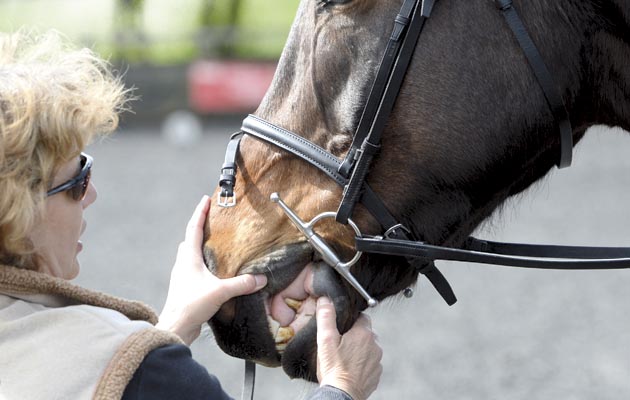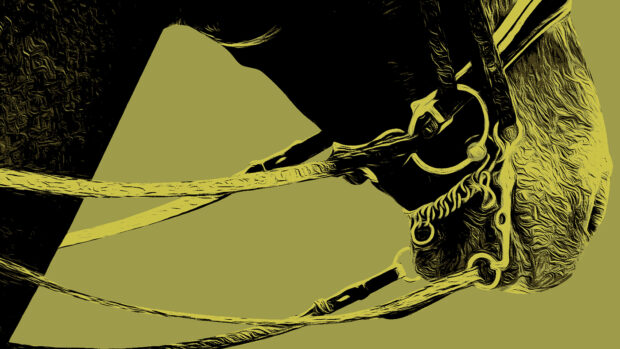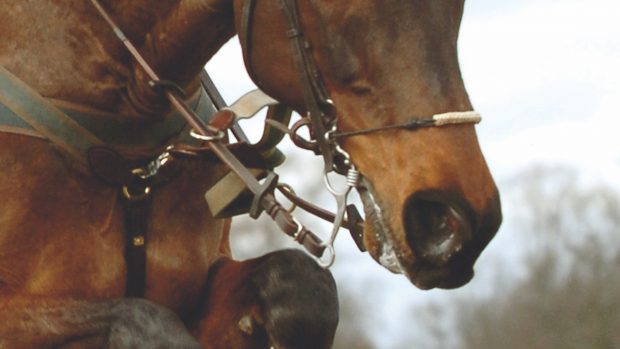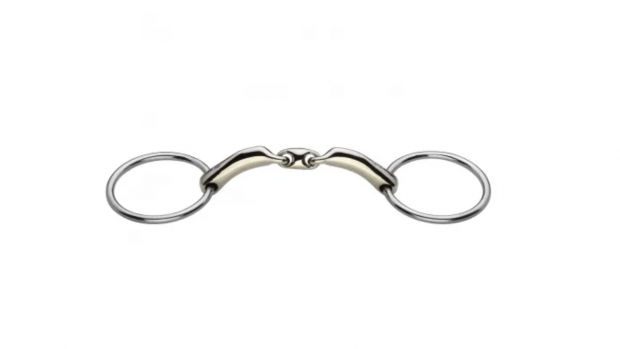What is a Dutch gag?
A Dutch gag typically consists of four rings: the top one where the cheek pieces attach and then three lower rings offering a variety of rein settings. There are also versions available with just two lower rings that some riders feel look neater.

How does a Dutch gag work?
The cheek ring is often quite large and flat with all the rings in alignment underneath, and it has a variety of rein options that allows the rider to use one bit for a variety of situations, depending on how much control is required.
“This bit is not legal in dressage competitions, but is often seen in showjumping as it offers a variety of ‘brake’ strengths,” says dressage rider Stef Eardley. “The lower down the bit the rein is attached, the more leverage on the poll and therefore the more control the rider has. It is a popular bit as it is effective but not overly severe and can be used with roundings on the lower ring and main ring to have a softer effect.”
What impact does a Dutch gag have on the horse?
“It comes with a variety of different mouthpieces and the action of the bit can vary greatly depending on the mouthpiece chosen,” Gail Johnson from Horse Bit Hire explains. “The action of this bit is to have some uplift in the mouth and a varying degree of leverage depending on the rein setting used.
“A curb strap is sometimes added which creates curb pressure and further tongue pressure, as the bit is kept stiller in the mouth.
“The long flat cheek can cause problems for some horses depending on facial conformation as, when it tilts, the top ring travels forward and can squash the face which can cause the horse to toss its head to avoid the pressure.”
What horse would benefit from a Dutch gag?
“In general, this cheek action raises the head so wouldn’t often be a first choice for a horse with a high head carriage,” Gail says. “If used in conjunction with a single-jointed mouthpiece, this would give quite a strong head raising signal depending on rein setting. Horses that find this cheek and mouthpiece action too strong, will sometimes lean into it.
“The Dutch gag in conjunction with a lozenge mouthpiece (pictured above) can be a good choice if a rider finds they needs a little extra control for jumping or fast work.”
Where to buy a Dutch gag
Shires Three Ring Dutch Gags
Sizes: 4½–6in | RRP: From £21.99 |
The links in bold below will take you to the standard single-jointed three ring gag pictured above. Shires also makes…
- Dutch gag with Waterford mouth
- Dutch gag with French link
- Dutch gag with a lozenge
- Dutch gag with a sweet iron Waterford mouth
- Dutch gag with EquiKind coating
- Dutch gag with EquiKind apple-flavoured coating
In the UK? View now at amazon.co.uk, viovet.co.uk, equus.co.uk or rideawaystore.com
You might also like:

5 top tips to help you choose the perfect bit for your horse

Eggbutt snaffle or loose ring: what’s the difference?
Snaffles are the most widely used bits on the market, but what is the difference between a loose ring and

9 bits designed with young horses in mind

Subscribe to Horse & Hound magazine today – and enjoy unlimited website access all year round
Horse & Hound magazine, out every Thursday, is packed with all the latest news and reports, as well as interviews, specials, nostalgia, vet and training advice. Find how you can enjoy the magazine delivered to your door every week, plus options to upgrade your subscription to access our online service that brings you breaking news and reports as well as other benefits.





